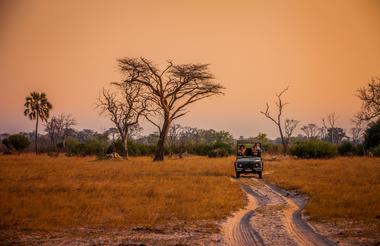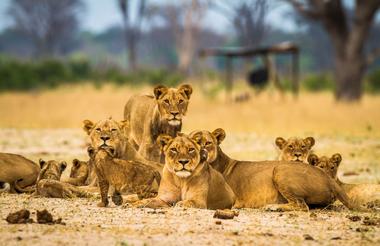At Victoria Falls, the earth splits open and swallows one of Africa’s greatest rivers, the mighty Zambezi, creating the largest sheet of falling water on earth. As the water hits the narrow depths of the Batoka Gorge beneath, it blasts a cloud of mist skywards, lending the falls their local name ‘mosi-oa-tunya’ (the smoke that thunders). When the Zambezi is its fullest, the mist hangs a permanent raincloud above the falls, showering visitors on even the sunniest of days and visible for miles around.
Above the falls on the upper Zambezi, boats cruise the tranquil water at sunset while the distant spray catches the fading light downstream. Below the falls, the Batoka Gorge’s rocky walls funnel the lower Zambezi into a chain of world-class rapids, prime for white water rafting.
Aside from being a UNESCO world heritage site and a natural world wonder, Victoria Falls also forms a natural border between Zimbabwe and Zambia. The falls can be seen from both countries, and for the most part the same activities are offered on both sides, from helicopter scenic flights to village visits and souvenir shopping.
Whether your idea of getting away from it all is a relaxed high tea in colonial grandeur or a heart-stopping bungee jump off a bridge, Victoria Falls keeps both the faint of heart and the most insatiable of adrenalin junkies busy for days.
From Zambia, a side on view of the falls is on offer with views into the Batoka Gorge, as well as the possibility of perching yourself at the edge of the falls on the vertigo-inducing Livingstone Island.
From Zimbabwe, you’ll get a full-frontal view of three quarters of the falls’ 1.7km wide curtain of water from viewpoints and footpaths meandering through a rainforest kept hot and humid by the spray of the falls.
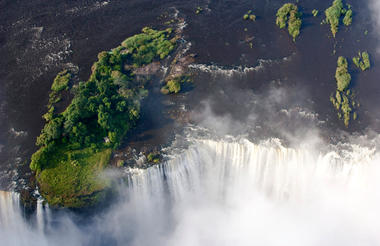
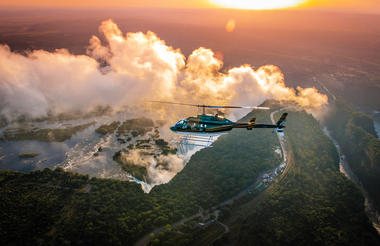
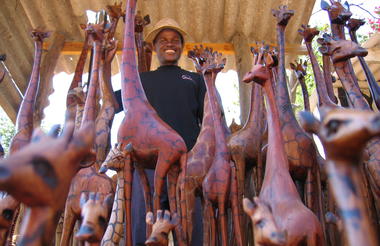
Located in western Zimbabwe, Hwange National Park (formerly Wankie Game Reserve) is the largest natural reserve in the country and is famous for its rich diversity of wildlife. The northern and western areas of the park are different - the northern area is encompassed by the Zambezi watershed, while the western part consists of grasslands, marshes, and scattered woodlands. The natural seeps such as Nehimba and Shakwanki, where animals dig for water, are particularly notable. The park is home to one of the biggest elephant populations in the world, as well as around 100 mammal species, and several protected animals including the endangered wild dog, critically endangered black rhino, and rare roan and sable. Around 500 bird species also inhabit the area. Visitors can look forward to bush hikes, game drives, and horse riding safaris.



If you have dreamt of an Africa with expansive plains and wide horizons, where elephant and buffalo traipse in huge numbers towards waterholes and giraffe browse from flat topped acacias while a blazing sun sets behind them… you can find it in Hwange.
As Zimbabwe’s largest national park, Hwange has a sizeable reputation that it wholeheartedly deserves.
The sight of hundreds, if not thousands of elephants and buffalos streaming towards you as you sit at a waterhole is indescribable. There is nothing like the sound of elephants' peaceful rumbling or the deep thundering of buffalo hooves on hard ground when they spook, wary of lions that may lie in wait.
This sight and sound of a waterhole in the midst of pristine wilderness visited by huge numbers of animals is typical of Hwange. Beyond the sights and sounds, the feeling of Hwange is what will remain with you: awe and peace from spending time in a true, preserved wilderness.
Hwange’s diverse habitats mean that it offers large numbers of desert adapted, plains and woodland animals. The famed elephant population is one of the largest in the world and it has plentiful predator populations such as lion, leopard and cheetah. Hwange also boasts one of Africa’s last strongholds of endangered African wild dogs.
Hwange offers the opportunity to see a variety of rare antelope such as eland, sable, roan and if you are lucky the desert-adapted oryx (gemsbok).
Apart from the variety of species and its beautiful setting, Hwange is unique in its ease of access. The park begins a mere hour from Victoria Falls and there is a range of accommodation across every price point. The North typically offers a mix of private lodging and National Park chalets, as well as a well-maintained road network. Hwange’s more southern concessions are generally private, offering luxury lodges and camps.
